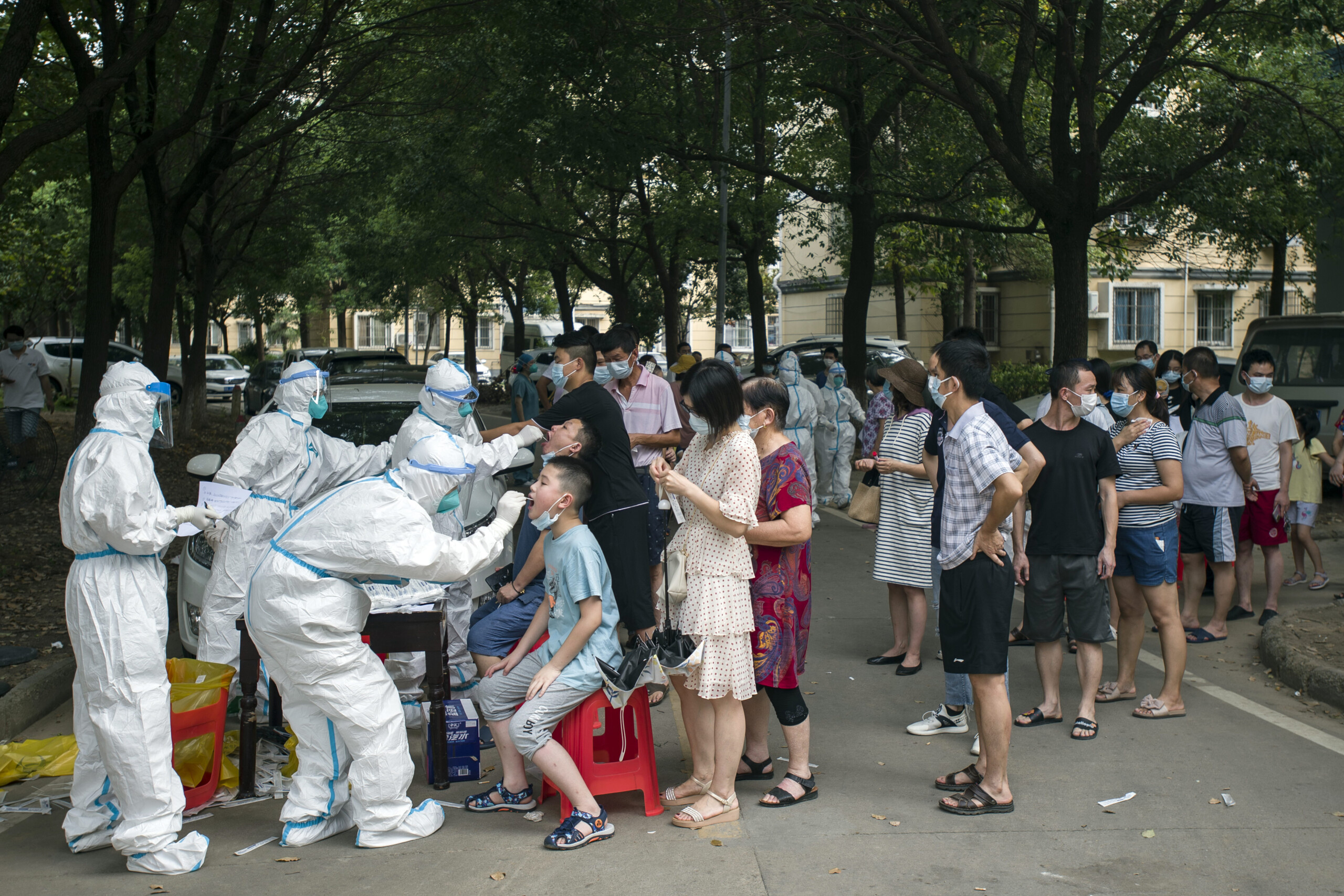Energy Department: COVID likely resulted from lab leak, furthering US intel divide
(CNN) — The U.S. Department of Energy has assessed that the COVID-19 pandemic most likely came from a laboratory leak in China, according to a newly updated classified intelligence report.
Two sources said that the Department of Energy assessed in the intelligence report that it had “low confidence” the COVID-19 virus accidentally escaped from a lab in Wuhan.
Intelligence agencies can make assessments with either low, medium or high confidence. A low confidence assessment generally means that the information obtained is not reliable enough or too fragmented to make a more definitive analytic judgment or that there is not enough information available to draw a more robust conclusion.
The latest assessment further adds to the divide in the U.S. government over whether the COVID-19 pandemic began in China in 2019 as the result of a lab leak or whether it emerged naturally. The various intelligence agencies have been split on the matter for years. In 2021, the intelligence community declassified a report that showed four agencies in the intelligence community had assessed with low confidence that the virus likely jumped from animals to humans naturally in the wild, while one assessed with moderate confidence that the pandemic was the result of a laboratory accident.
Three other intelligence community elements were unable to coalesce around either explanation without additional information, the report said.
The Wall Street Journal first reported on the new assessment from the Department of Energy. A senior U.S. intelligence official told the Journal that the update to the intelligence assessment was conducted in light of new intelligence, further study of academic literature and in consultation with experts outside government.
A Department of Energy spokesperson told CNN in a statement: “The Department of Energy continues to support the thorough, careful, and objective work of our intelligence professionals in investigating the origins of COVID-19, as the President directed.”
The Department of Energy’s Office of Intelligence and Counterintelligence is one of 18 government agencies that make up the intelligence community, which are under the umbrella of the Office of the Director of National Intelligence.
The Office of the Director of National Intelligence declined to comment.
The latest intelligence assessment was provided to Congress as Republicans on Capitol Hill have been pushing for further investigation into the lab leak theory, while accusing the Biden administration of playing down its possibility.
A spokesperson for House Oversight Chairman James Comer, a Kentucky Republican, said in a statement that the committee was “reviewing the classified information provided” by the Office of the Director of National Intelligence in response to a letter requesting information earlier this month.
One of the sources said that the new assessment from the Department of Energy is similar to information from a House Republican Intelligence Committee report released last year on the origins of the virus.
National security adviser Jake Sullivan said on CNN’s “State of the Union” on Sunday that the intelligence community remains divided on the matter, while noting that President Joe Biden has put resources into getting to the bottom of the origin question.
“Right now, there is not a definitive answer that has emerged from the intelligence community on this question,” Sullivan told CNN’s Dana Bash. “Some elements of the intelligence community have reached conclusions on one side, some on the other. A number of them have said they just don’t have enough information to be sure.”
Sullivan said Biden had directed the national laboratories, which are part of the Department of Energy, to be brought into the assessment.
In May 2020, researchers at the government-backed Lawrence Livermore National Laboratory issued a classified report that found it was possible that the coronavirus escaped from a lab in Wuhan, which came at a time when that line of inquiry was considered taboo.
The United States began exploring the possibility that COVID-19 spread in a laboratory as early as April 2020, though the intelligence community has noted repeatedly that a lack of cooperation from Beijing has made it difficult to get to the bottom of the question.
